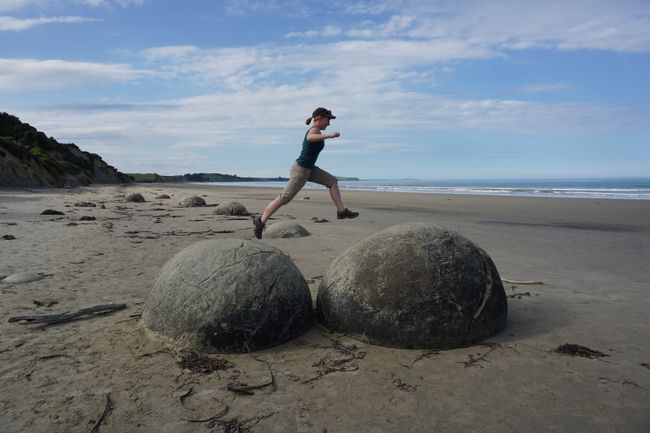<p>21.12.2017: Adorable kiwi chicks</p>
Publicatu: 25.12.2017
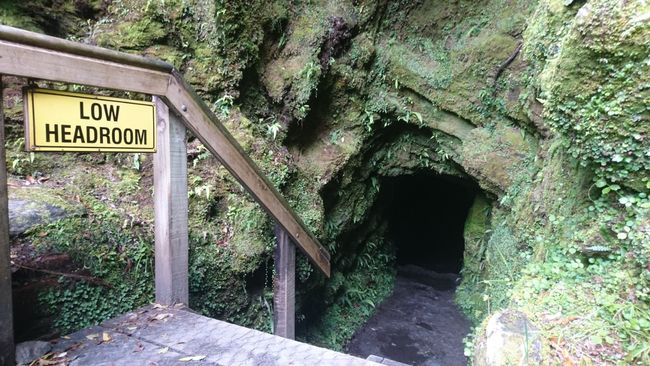
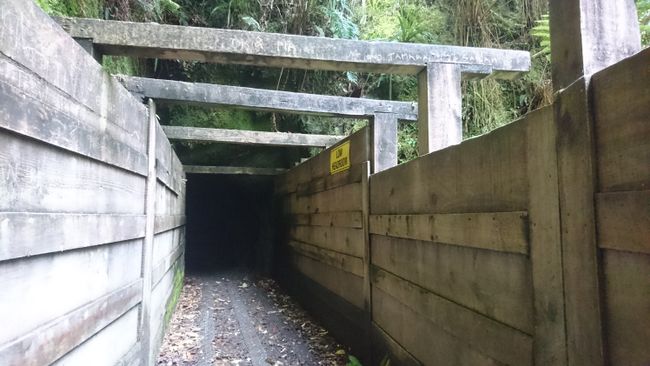
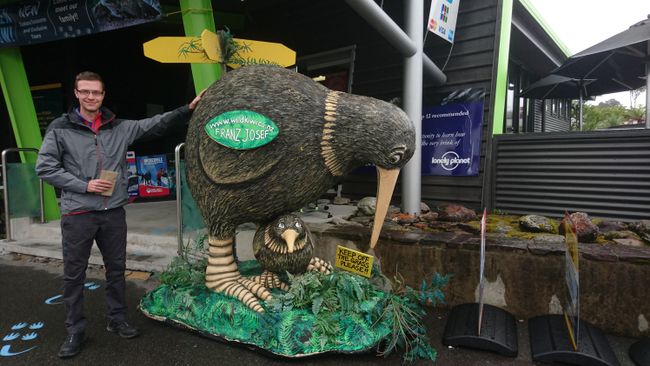
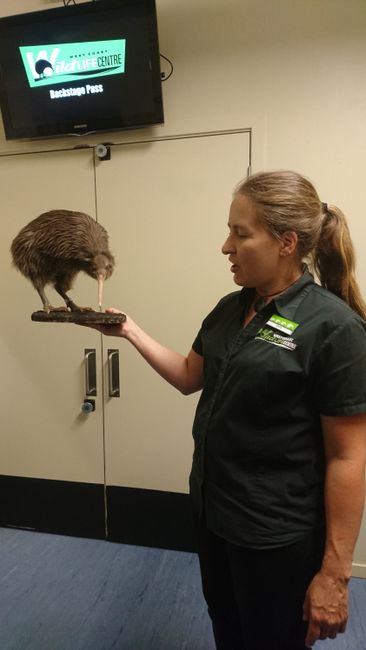
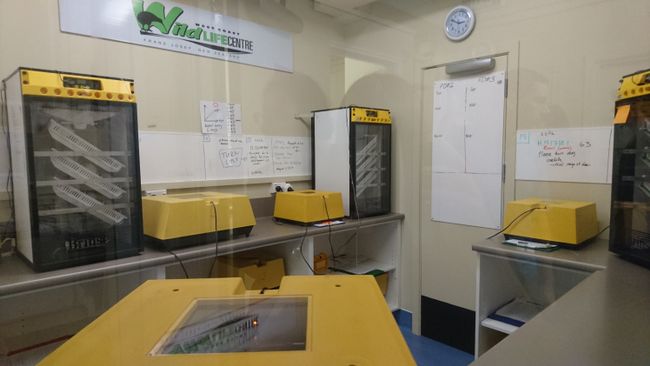
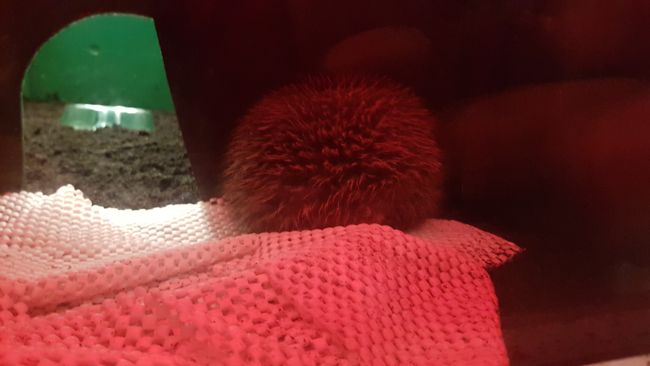
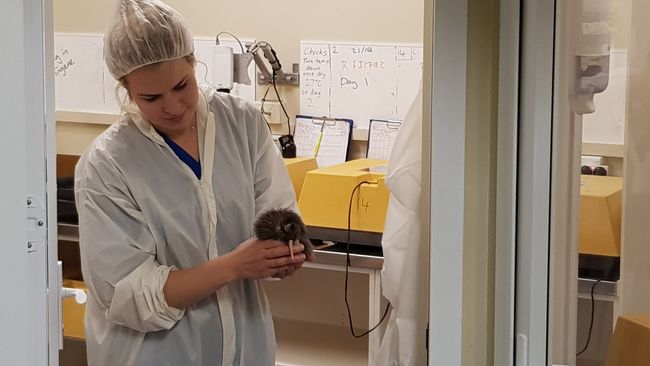
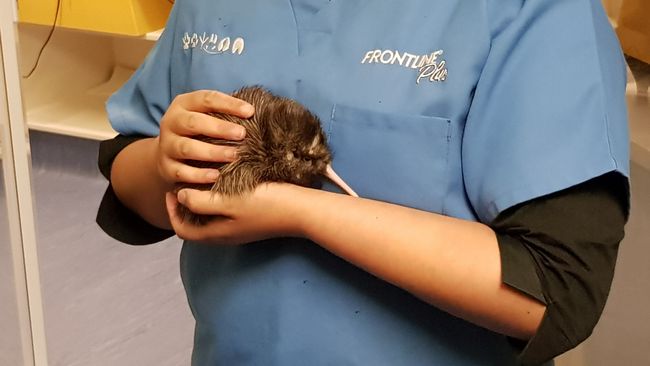
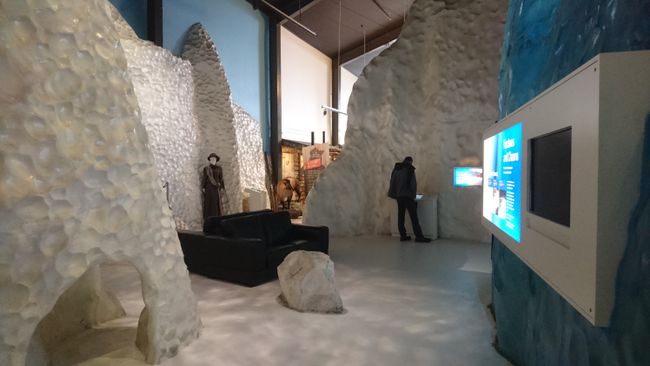
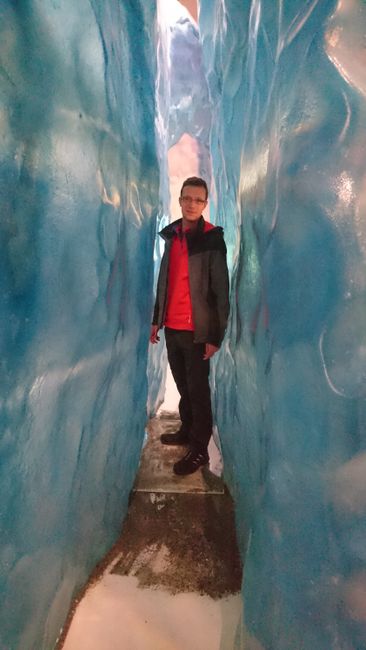
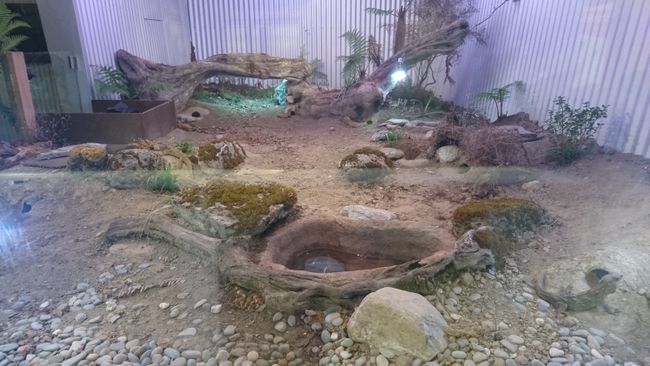
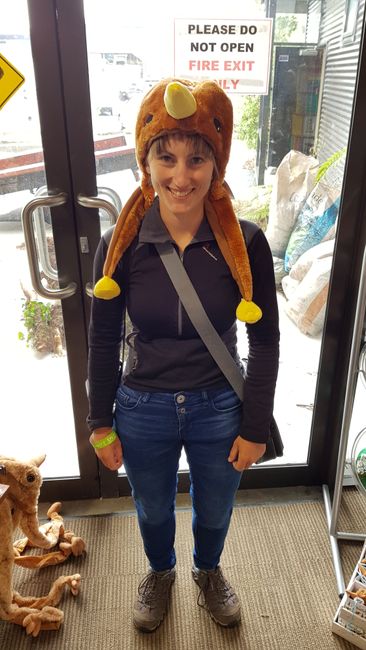
Abbonate à Newsletter
There aren't many options on a rainy day in Franz Josef Village. Most hiking trails lead to viewpoints overlooking the glacier, which are not really worth it on days like today, when the white sky hardly distinguishes itself from the ice. However, we have been following the weather forecast and we are prepared.
In the late morning, when the sky is already cloudy but still dry, we set off on a short hike. The 'Tatare Tunnels Walk' gently ascends and ends at a long, dark tunnel entrance. You might be wondering why there is such a tunnel in the middle of the bush?
It is the year 1907: Rich gold deposits are suspected in the region, and three teams are commissioned to work around the clock, forcing a 500 m long tunnel out of the Tatare Hill to pump water into the mine 5 km away at the Waiho River. Without modern machinery, it took over 12 months to drive the tunnel into the bedrock. Unfortunately, the gold finds were not large enough to cover the costs, so the gold rush in Franz Josef abruptly came to an end in 1908. But the painstaking work was not entirely in vain. The hydroelectric power plant supplied the community of Franz Josef and a sawmill with water and energy for many years until it fell victim to a massive flood in 1982. That's the story in a nutshell.
Back to our walk: The ankle-deep water in the tunnel is ice-cold. It feels like needles piercing the increasingly painful feet, and we have to take more frequent breaks to warm them up in dry areas. If you turn off the flashlight just before the end of the tunnel, a milky way of glowworms opens up above the heads of the people - we pause and simply enjoy the moment. There is no alternative way back, we have to go through the Kneipp bath again. On the way, we shine our flashlight into a crevice in search of a cave weta and are attacked by two huge insects with long legs, which run towards the light from our flashlight. Apparently, they are not amused by the bright disturbance. Don't bother, Mr. and Mrs. Whatever-insect-genus-you-belong-to; we dart away faster than you can say 'Cave Weta'. At first, we thought they were spiders, but after some research, it turns out that they were indeed cave wetas. Their bodies can grow up to 3 cm long, and their legs and antennae add up to 4 cm. The photos also match. It's good that I only now know that they can also jump. Individual representatives of the weta family, which belong to the long-horned grasshoppers, can grow up to 90 mm long and weigh 70 g. No thanks, I don't need to get acquainted with them; the encounter with the much smaller cave weta was enough for me. When we reach the exit, 4 newcomers arrive. We've timed that perfectly. On the way back, our feet become pleasantly warm. I had already wondered how long it takes for toes to freeze...
Shortly before the hostel, it starts to drizzle. We quickly secure our backstage passes for the Kiwi tour at 2:30 p.m. in the neighboring Kiwi Wildlife Center and then go to the hostel to shower and have lunch. Just before half past 2, we arrive at the Kiwi Wildlife Center. We chose the backstage tour because there are chicks under a month old to see, and you can even take pictures of them. We are lucky that during our tour, a 3-day-old chick is being moved, and the caregiver holds it in front of our camera lenses for half a minute. The shutters don't stop clicking. With their little sleepy button eyes, the chick captures our hearts in a storm.
Afterwards, we get to admire the slightly older chicks in their incubators. The little balls of feathers have curled up like hedgehogs and buried their beaks under their wing stubs - incredibly cute!!! You'd like to take them home. In addition, there is a lot of information about the kiwi and its special features.
Next, we visit the nocturnal enclosure, which houses three more rare rowi kiwis, one of which is asleep and two of which are poking around in the ground for worms and insects. For a change, there is not a glass pane, but only a low partition separating visitors from the animal inhabitants, which makes the encounter much more personal. When a family with a baby enters, which promptly starts crying, they hide and we continue our tour. Various information boards describe the lifestyle of kiwis and the dangers they face, as well as the glaciers and pioneering stories. Just before the exit, there is also an enclosure where we count 5 tuataras, which, however, do not move a millimeter.
The adorable kiwi chicks were worth the 58 NZD, otherwise I must say that I consider the regular admission price of 38 NZD for what is offered to be overpriced. After the backstage tour, we only needed a maximum of 30 minutes to visit the Kiwi Wildlife Center. Nevertheless, along with a visit to the local spa, it is probably the best way to spend a rainy day in Franz Josef Village.
Abbonate à Newsletter
Rispondi (1)
Matthias
Na, hast du die schicke Mütze auch gekauft?😄😎
Rapporti di viaghju Nova Zelanda

